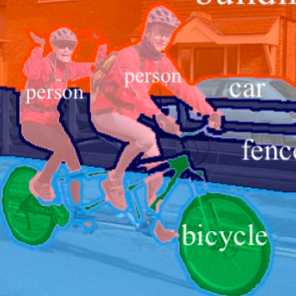Spatial pyramid pooling module or encode-decoder structure are used in deep neural networks for semantic segmentation task. The former networks are able to encode multi-scale contextual information by probing the incoming features with filters or pooling operations at multiple rates and multiple effective fields-of-view, while the latter networks can capture sharper object boundaries by gradually recovering the spatial information. In this work, we propose to combine the advantages from both methods. Specifically, our proposed model, DeepLabv3+, extends DeepLabv3 by adding a simple yet effective decoder module to refine the segmentation results especially along object boundaries. We further explore the Xception model and apply the depthwise separable convolution to both Atrous Spatial Pyramid Pooling and decoder modules, resulting in a faster and stronger encoder-decoder network. We demonstrate the effectiveness of the proposed model on the PASCAL VOC 2012 semantic image segmentation dataset and achieve a performance of 89% on the test set without any post-processing. Our paper is accompanied with a publicly available reference implementation of the proposed models in Tensorflow.
翻译:在深神经网络中使用了空间金字塔集合模块或编码解码器结构,以进行语义分割任务。前一个网络能够通过以多种速度和多种有效视野的过滤器或集成操作对进入的功能进行检测,从而对多尺度背景信息进行编码,而后一个网络可以通过逐步恢复空间信息捕捉尖锐的物体边界。在这项工作中,我们提议将这两种方法的优势结合起来。具体地说,我们提议的模型DeepLabv3+将DeepLabv3扩展为DeepLabv3,方法是增加一个简单而有效的解码器模块,以完善分解结果,特别是在物体边界沿线的分解结果。我们进一步探索Xception模型,并将深度分解码器模块应用到Atros Space Pyramid Pooling和分解码器模块,从而导致更快、更强的编码器解码器网络。我们展示了PACAL VOC 2012 语义图象分解数据集的拟议模型的有效性,并在测试集上实现89%的功能,而无需任何后处理。我们的文件附有公开的参考。在Tensororproproproto中实施拟议的模型。





